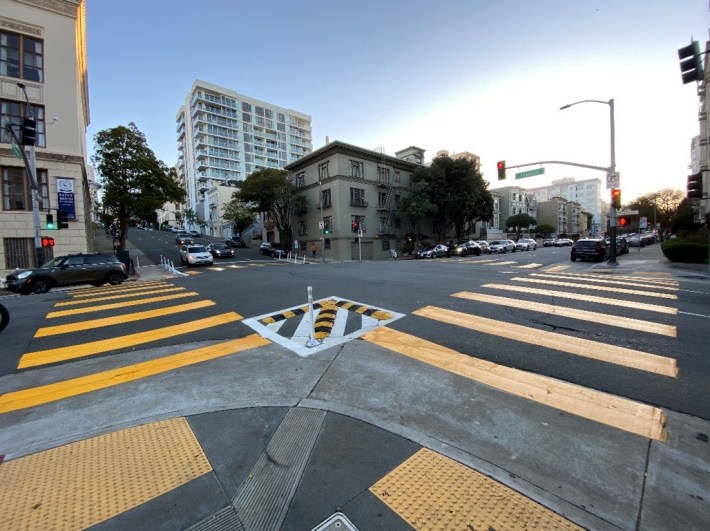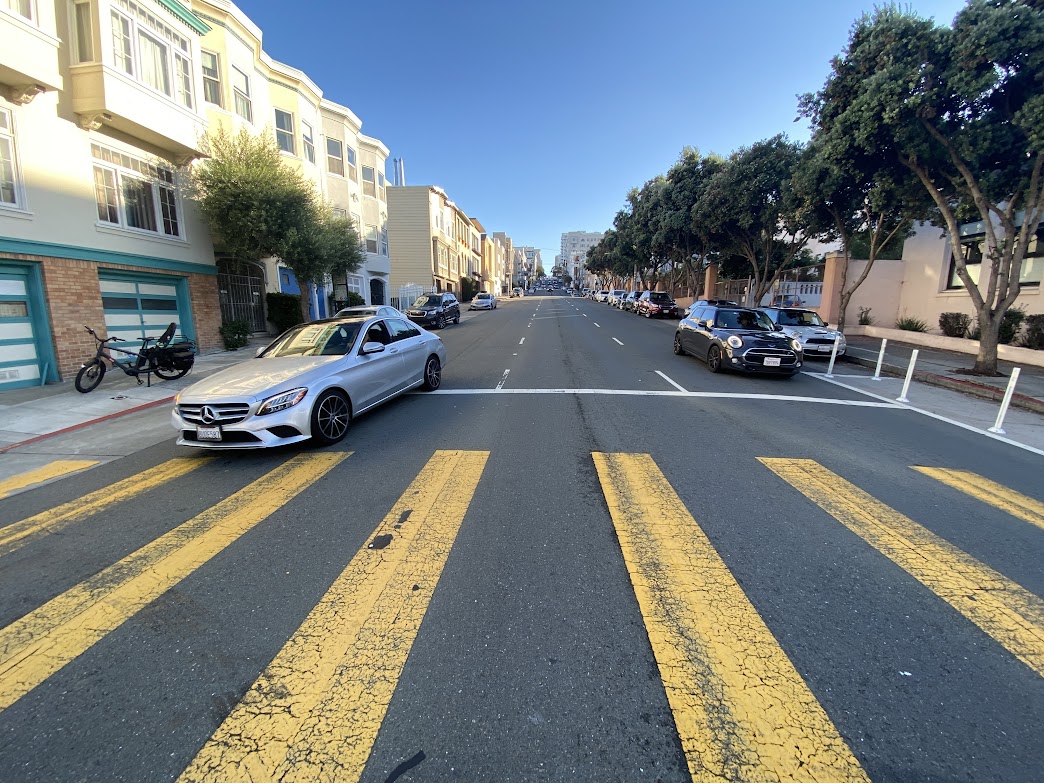SFMTA published study results Wednesday on the Franklin Street Quick-Build Project, "an effort to enhance traffic safety on Franklin Street between Broadway and Lombard Streets," as the agency described it in their blog post. The project was completed in late 2022. A planned road diet was cut from the designs due to concerns about "levels of service."
The results are both expected and unimpressive for a project that was originally supposed to include a lane reduction or "road diet" (As seen in the lead photo, Franklin has three traffic lanes and two lanes for private car storage). "The SFMTA has spent a lot of time, money, and public outreach on a solution that does NOT achieve its goals. The failure is evident in the preliminary report," wrote advocate Shanan Delp, who lives on Franklin and regularly rides his bike or walks with his two small children.

Specifically, Delp, who dug into the raw data, found the following:
- Driver yielding [to pedestrians at crosswalks] was not significantly impacted by the project elements. The driver yielding rate decreased three percentage points, from a 63% yield rate before implementation, to a 60% yield rate after implementation.
- Eastbound crosswalks across all intersections experienced a decrease in driver yield rates
- The project did not significantly impact through-vehicle speeds. 85th percentile speeds on Franklin Street increased by 5%, on average, after project implementation.
However, as Delp--and of course SFMTA--point out, not all the news is bad. From SFMTA's post on the data: The initial results offer some signs of progress, including a reduction in "'close calls' between people driving and people walking in crosswalks, compared to three such incidents before" they installed soft-hit posts and 'turn wedges' as pictured below:

SFMTA also found that drivers complied with new right-turn restrictions 94 percent of the time.
Delp remains frustrated, however, that speeds remain high, especially considering a motorist killed educator Andrew Zieman in front of Sherman Elementary at Union Street two years ago.
To Delp, SFMTA's changes ignore the primary issue: "The high volume and speed of cars that continuously race down Franklin has created a dangerous situation for the densely populated neighborhood. That shows in the data: it has been on the city’s high injury network (the roads that account for the majority of traffic deaths and injuries) for years, and in fact the number of blocks of Franklin on the network grew when the map was updated in 2022."
"Any resident or city planner knows that this street is dangerous, as the physical engineering of the street optimizes cars above all else," he added. "It is unsafe, and out of step with how an urban neighborhood should prioritize space."
SFMTA conceded that there's still more to do. "While the project did improve intersection safety, it was not effective at reducing speeds along Franklin Street." The agency is now discussing bringing back the road diet, at least partially.





